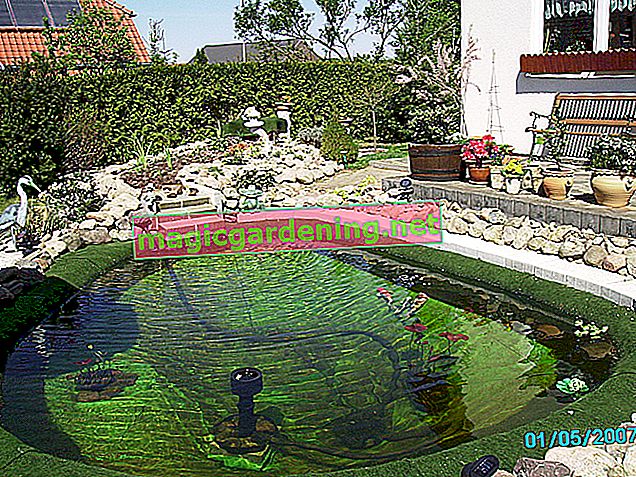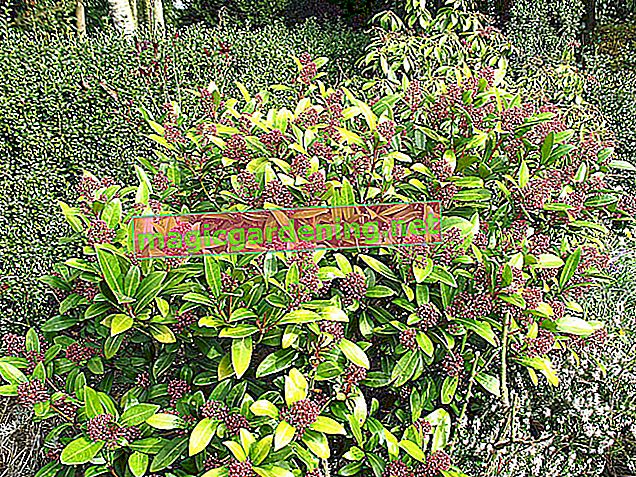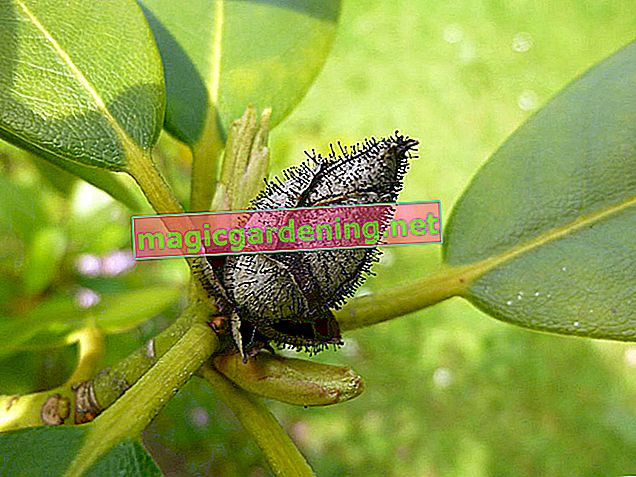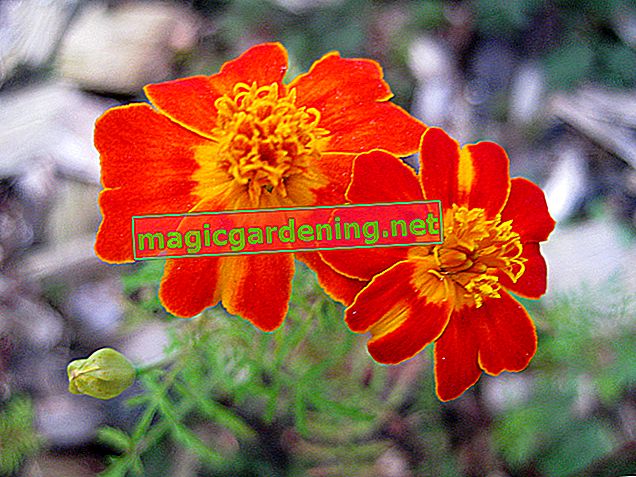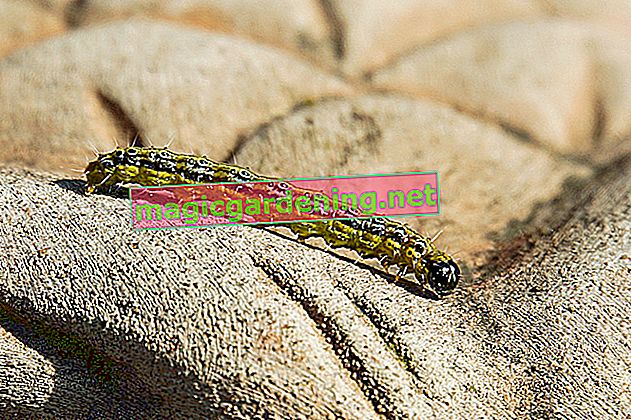
Plant the splendid gap correctly
Plant the Ährige Prachtscharte in small groups in a sun-drenched location with fresh, moist, humus-rich and well-drained soil. Here you create small pits at a distance of 25-30 cm, the excavation of which is optimized with compost and a little sand. After the still potted root ball has been soaked with water, pot the young perennial. Placed in the center of the planting hole, fill the cavity with the substrate, press everything down well and water.
Continue reading
also read
- Plant the splendid notch correctly for magnificent flowers
- The Prachtscharte: hardy outdoors?
- The best location for the Prachtscharte
Care tips
Growth and flowers meet all expectations if the magnificent perennial enjoys this care:
- Keep the soil constantly slightly moist
- Organically fertilize from May to August on a monthly basis
- Cut off withered, brown inflorescences
- Cut the fallen leaves down to the ground before the first frost
After pruning in autumn, cover the root disc with leaves or coniferous twigs so that permanent winter wetness does not allow the rhizome to rot.
Continue reading
Which location is suitable?
If the Ährige Prachtscharte is looking for a suitable place in the great outdoors, it is usually a sunny, warm and sheltered location. In the garden, the pretty perennial proves to be grateful for a nutrient-rich, slightly moist soil in which no water accumulates. If you want to enjoy the elegant flower spikes on the balcony, you can do this in the sun-drenched location in permeable compost-based potting soil.
Continue reading
What soil does the plant need?
If this shapely shrub is provided with nutrient-rich, fresh and moist soil, it can tolerate short-term drought during summer periods with little rain. The strong rhizome should not sink into the water, however, because the plant reacts extremely annoyed to waterlogging. If in doubt, loosen the compacted soil with sand, fine grit, (€ 12.80 at Amazon *) leafy soil or compost. For a spiked splendor in pot culture, we therefore recommend potting soil with little or no peat content, as this material no longer stores water and compresses it once it has dried.
When is the flowering time?
The Ährige Prachtscharte lets us take part in its blooming spectacle from July to September. Do not miss the floral spectacle when the slim cylinders unfold from top to bottom in bright lavender, purple or white. After a few days the entire flower candle is covered with innumerable flower heads, which in turn consist of tiny tubular flowers.
Cut the splendid notch correctly
As soon as a spiked splendor fades, the perennial loses its graceful appearance. Therefore cut off withered flower candles as soon as possible. From October the perennial pulls in its grass-like leaves, with the nutrients remaining in them being stored in the underground rhizome. Only after this process is complete and the leaves have withered completely, cut them down to the ground.
Continue reading
Pour splendid notch
Fluctuations in the water balance are tolerated good-naturedly, but if they occur repeatedly they have a detrimental effect on vitality and lifespan. Therefore, water the Ährige Prachtscharte regularly when the soil has dried to a depth of approx. 2 cm. Where the rain contributes to the water supply in the bed, this measure is less often the case than for a perennial in a pot.
Fertilize the splendid gap properly
Where there is always a supply of compost available in the naturally cultivated garden, the Ährige Splendid Scharte thanks for a monthly ration in the period from May to August with lush flowers. Alternatively, a single application of complete fertilizer in May is sufficient to cover the nutritional requirements for this season. If the perennial thrives in the pot, add a little liquid fertilizer to the irrigation water every 14 days.
Overwinter
The focus of healthy wintering is on protection from permanent moisture, because the Ährige splendid gorge can withstand frosty temperatures down to - 34 degrees Celsius. It is important to use the following measures to protect the rootstock from excess moisture so that rot does not spread:
- Cut the perennial close to the ground in autumn
- Before the first frost, pile up the root disc thickly with leaves and needles
- After pruning, move potted plants to a frost-free room
- Water from time to time in the winter quarters so that the rootstock does not dry out
In good time before the new shoots, the winter protection is removed or the planter cleared out again.
Increase the splendor gap
For propagation you have the choice between two methods that are successfully practiced in the hobby garden. The simpler approach is to divide the rootstock in spring or autumn. To do this, dig out the spiked splendor in order to cut it into two or more segments. You can easily plant each section in the sunny location in loose, humus-free soil and water regularly in the following time.
In contrast, sowing turns out to be a little more laborious. In March sow the very fine seeds on the seed soil. After the seeds have been sifted only very thinly with sand and watered with a fine shower head, place the seed pot in the partially shaded window seat. Germination progresses rapidly at 18 to 20 degrees Celsius. The seedlings are pricked out when they have at least 2 pairs of leaves. Planting time for seedlings-propagated splendid loops is from mid-May.
How do I transplant properly?
Transplanting onto a spiked splendor has a synergy effect in several ways. If you carry out this maintenance measure every 4 to 5 years, this contributes significantly to a rejuvenation. At the same time, you have the opportunity to easily multiply the magnificent perennial. How to do it right:
- Lift the rhizome out of the ground in March / April or August / September
- Shake off the remaining soil from the roots to cut off stunted and rotten strands
- Use a sharp knife or a sharpened spade to cut the root ball
- At the previous and new location, prepare the soil with compost and sand in order to plant the segments
- The more precisely the previous planting depth is maintained, the faster the rooting will take place
In potted cultivation, we recommend replanting the spiked splendor every 1 to 2 years. At the latest when the roots are completely rooted in the vessel, you cannot avoid this work in early spring.
Nice varieties
- Kobold: Compact variety, whose lilac-colored flower spikes stand out in the small garden; Growth height 30-40 cm
- Floristan: Feathery flowers in bright white characterize this spiky splendor; Growth height up to 80 cm
- Callilepis: Their purple-colored feathers stretch out towards the sun from July to September; Growth height up to 90 cm
- Elegans: Noble garden splendor, whose purple-red inflorescences sway gently in the summer wind; Height 60 cm
- Prairie splendor: Majestic variety whose flower spikes rise up to 150 cm above the narrow leaves

